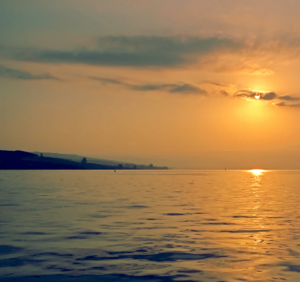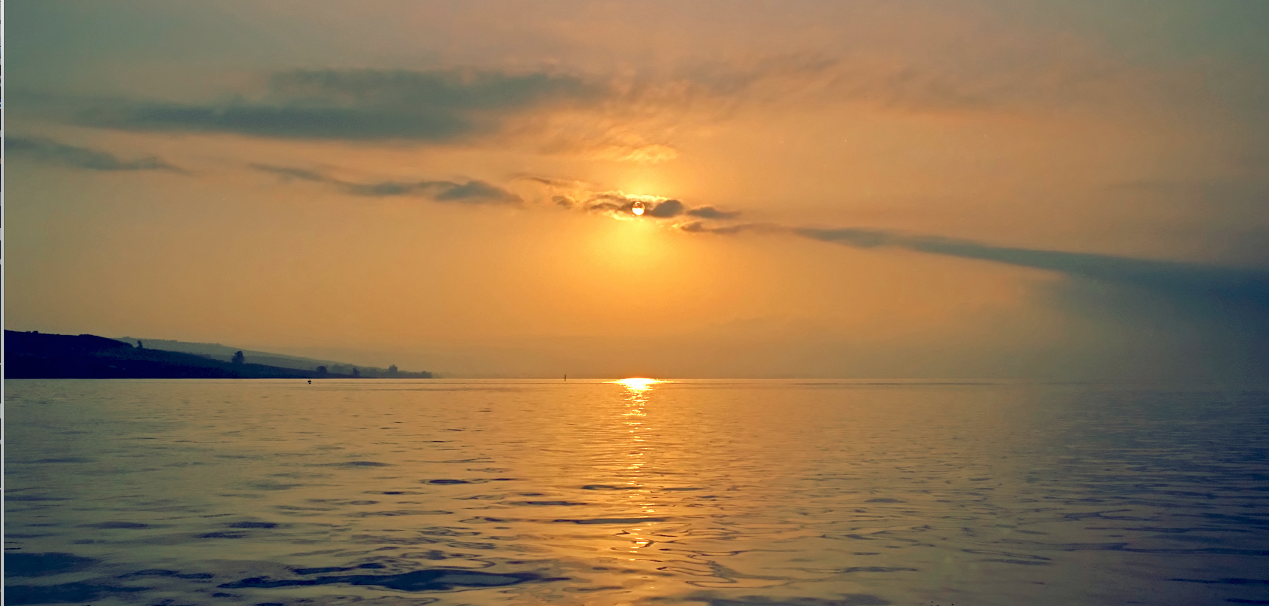
By Alina Dain Sharon/JNS.org
Israeli water experts say that a combination of water from rainfall, recycling of wastewater, desalination of seawater, and a large-scare water conservation campaign has made Israel nearly drought-proof. That assessment might be more regionally relevant than ever amid a new National Aeronautics and Space Administration (NASA) study, released earlier this month, showing that a drought from 1998-2012 in the eastern Mediterranean was the area’s worst drought in 900 years.
Today, more than half of the water supplied in Israel for all uses is self-generated, says Uri Schor, a spokesperson for the Israeli government’s Water Authority.
“That makes us a country that can pass a [severely dry] year and even a series of drought years without worrying too much,” Schor says.
The Jewish state’s ability to create a sufficient water supply is particularly noteworthy in light of an assessment by Dr. Ben Cook, lead author and climate scientist at NASA’s Goddard Institute for Space Studies and the Lamont Doherty Earth Observatory at New York’s Columbia University, that “climate change on average will be making this particular region in the world dryer in the coming decades and over the next century.”
“That means we need to be much more careful with how we use and conserve water,” Cook says, citing his familiarity with Israeli water conservation methods such as desalination.
NASA’s latest research reconstructed drought history in Levant region — encompassing Turkey, Syria, Lebanon, Jordan, Israel, and the disputed Palestinian territories — by studying tree rings. Dry years are indicated thin tree rings, while relatively wet years are indicated by thick rings.
Trees, Cook says, tend to “put on one ring of growth every year. We can look at the alternating patterns of wide and narrow rings and reconstruct drought variability and wetness for these previous centuries. And then we can look at the magnitude of those growths to tell us the magnitude of the drought or the magnitude of the wetness that would have occurred.”
Samples of tree rings collected from the Levant region were converted to an index and used to determine that the drought between 1998 and 2012 was about 20 percent worse than the previously driest period over a 900-year span. This was confirmed by comparing the gathered data with droughts reported in historical documents.
If “you look at the bible,” the Israeli Water Authority’s Schor explained, it is evident that Israel has always had a scarcity of water. But today’s scarcity, which has grown during the past 20-25 years and was especially severe over the past decade, was caused largely by a yearly decrease in rainfall as well as growths in population and quality of life that led to higher demand for water.
According to Jack Gilron, head of the Department of Desalination and Water Treatment at the Zuckerberg Institute for Water Research at Ben-Gurion University of the Negev in Be’er Sheva, Israel, when it comes to natural water sources — like the Sea of Galilee, for instance — depletion is measured through red and black lines.
If an aquifer depletes below a red line, Gilron says, “it may cause damage … but it’s damage that’s considered reversible. If you then refill it, you counteract what was done. If you go below the black line…you will cause irreversible damage to the aquifer.”
The water in the Sea of Galilee — known as the Kinneret in Hebrew — has at times depleted to levels precariously close to these line limits.
Schor likes to compare the scarcity of water in Israel over the past two decades to a bank account. “We reached a certain point that we earned much less than what we spent,” he says.
Gilron explained that the winter of 2007-8 was especially dry, bringing only about two-thirds of the region’s expected rainfall, leading Israel to ramp up its “large-scale seawater desalination program even more quickly than it had planned.”
Desalination is the process of converting seawater into potable water. Among the nation’s five desalination plants, the world’s largest seawater desalination plant, Sorek, is located about 9 miles south of Tel Aviv and became operational in October 2013. It produces about 624,000 cubic meters (roughly 164 million gallons) of potable water a day. The plant was built by IDE Technologies, an Israeli water desalination company named by MIT Technology Review as one of the world’s 50 smartest companies for 2015, and the same company that co-designed the Western Hemisphere’s largest desalination plant, a California-based facility that is expected to provide the U.S. state with roughly 200 thousand cubic meters (50 million gallons) of drinking water daily.
The Sorek plant desalinates water using a process known as reverse osmosis, in which pumps create pressure that removes salt from seawater through a semi-permeable membrane. As the water passes across the membrane, only the residual salt brine is left behind. This is then released back into the Mediterranean Sea in a controlled manner. The sea is large enough to absorb back this salt brine without its overall salt levels being affected. In Israel, reverse osmosis is “definitely the workhorse,” Gilron says.
But desalination has not been Israel’s only method of producing much-needed water. Schor noted that Israel is a world leader in the recycling of sewage water, treating “more than 86 percent of all of [its] sewage.” According to a newly released quality of life report for the 34-nation Organisation for Economic Co-operation and Development (OECD), the proportion of Israelis not hooked up to wastewater recycling fell from 7.7 percent in 2000 to 2.2 percent in 2014, giving Israel the best percentage in the OECD.
Schor added that on the side of water consumption, Israel has been able to “cut down very severely the quantities of water budgeted for agriculture,” in addition to undertaking a large-scale advertising campaign as well as visits to institutions like schools in order to advocate for water conservation.
Further, along with saving water in agriculture through Israel’s famed drip irrigation technology, the Jewish state has also conserved water in homes with devices reducing the amount of water coming out from taps and showerheads. In such home devices, says Schor, air is mixed with water “in such a manner that you get an impression of a very strong stream of water. This saves approximately a third of the water that you use.”
Schor says Israel’s water conservation campaign led to an 18-percent reduction in home and city water usage. The Israeli government also stopped subsidizing the cost of water and reduced by 9 percent municipal water loss caused by leaking pipes.
Using these various measures, Israel has been able to supply itself with the 2 billion cubic meters (about 528 billion gallons) of water it requires a year. That includes the approximately 57 million cubic meters (15 billion gallons) of water per year that Israel provides to Palestinians living in the West Bank, which is nearly double the amount that was agreed upon in the Oslo Accords, as well as the 55 million cubic meters (just under 15 billion gallons) that Israel provides annually to Jordan.
Israel also transfers water to Gaza, which is ruled by the Palestinian terror group Hamas, at a price equal to the cost of desalinating water and transporting it. A supply pipeline extending to Israel’s border with Gaza was laid out for this purpose.
“Several years ago, we laid the line near the [Gaza border] fence on purpose in order to give the Palestinians the increment. With the rise of Hamas, contact was cut off, and only recently have conditions become ripe to supply them the water,” Avraham Ben-Yosef, vice president of engineering for the Israeli national water company Mekorot, told Yedioth Ahronoth in June 2015.
In March 2015, Israel announced plans to double the amount of water it delivers to Gaza to 10 million cubic meters (2.6 billion gallons) per year in an effort to mitigate the major water crisis affecting the Palestinian coastal enclave.
Most recently, in February 2016, the Israeli government signed a major agreement with Jordan and the Palestinian Authority regarding a plan to desalinate and share approximately 120 million cubic meters (about 32 billion gallons) of water from the Red Sea. The leftover salt brine from the desalination process will be transferred to replenish the Dead Sea. A new desalination plant in the Jordanian city of Aqaba will be built for this purpose. The project is expected to cost about $800 million.
Miriam Faigon, director of IDE Technologies’s Solutions Department, told NBC’s Bay Area affiliate station KNTV in September 2015 that when Israeli policymakers decided to increase desalination efforts, “they understood that we cannot depend on the weather. We cannot depend on rain anymore.”
In line with NASA’s new findings, recent climate models from the Intergovernmental Panel on Climate Change at the United Nations predict that by around the year 2030-2050, temperatures in the Middle East and central Asia will increase by 1-2 degrees Celsius, with the higher temperatures likely to cause greater water evaporation.
“We are starting to see these events that push outside the range of natural variations that we would except,” the NASA Goddard Institute’s Cook says
Schor says that while Israel currently has the capability to produce additional water that could be exported outside its borders, that is a costly process. For other countries in the Mediterranean region, purchasing and transferring water from Israel is possibly more expensive than self-producing the water those nations need.
Other countries, argued Schor, “should do exactly what we did [in Israel]. They should recycle sewage, reduce tremendously their water losses, and desalinate seawater.”








Comments